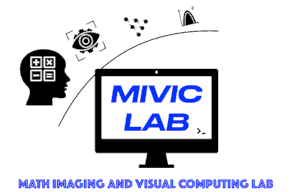| Title | Single slice thigh CT muscle group segmentation with domain adaptation and self-training |
| Publication Type | Journal Article |
| Year of Publication | 2023 |
| Authors | Yang, Q, Yu, X, Lee, HHin, Cai, LY, Xu, K, Bao, S, Huo, Y, Moore, AZenobia, Makrogiannis, S, Ferrucci, L, Landman, BA |
| Journal | Journal of Medical Imaging |
| Volume | 10 |
| Pagination | 044001 |
| Keywords | Adversarial training, Anatomy, Bone, computed tomography, Data modeling, domain adaptation, Education and training, Gallium nitride, image segmentation, magnetic resonance, Magnetic Resonance Imaging, Muscles, self-training, single slice, thigh muscle segmentation |
| Abstract | PurposeThigh muscle group segmentation is important for assessing muscle anatomy, metabolic disease, and aging. Many efforts have been put into quantifying muscle tissues with magnetic resonance (MR) imaging, including manual annotation of individual muscles. However, leveraging publicly available annotations in MR images to achieve muscle group segmentation on single-slice computed tomography (CT) thigh images is challenging.ApproachWe propose an unsupervised domain adaptation pipeline with self-training to transfer labels from three-dimensional MR to single CT slices. First, we transform the image appearance from MR to CT with CycleGAN and feed the synthesized CT images to a segmenter simultaneously. Single CT slices are divided into hard and easy cohorts based on the entropy of pseudo-labels predicted by the segmenter. After refining easy cohort pseudo-labels based on anatomical assumption, self-training with easy and hard splits is applied to fine-tune the segmenter.ResultsOn 152 withheld single CT thigh images, the proposed pipeline achieved a mean Dice of 0.888 (0.041) across all muscle groups, including gracilis, hamstrings, quadriceps femoris, and sartorius muscle.ConclusionsTo our best knowledge, this is the first pipeline to achieve domain adaptation from MR to CT for thigh images. The proposed pipeline effectively and robustly extracts muscle groups on two-dimensional single-slice CT thigh images. The container is available for public use in GitHub repository available at: https://github.com/MASILab/DA_CT_muscle_seg. |
| URL | https://doi.org/10.1117/1.JMI.10.4.044001 |
| DOI | 10.1117/1.JMI.10.4.044001 |
Single slice thigh CT muscle group segmentation with domain adaptation and self-training
Submitted by admin on Mon, 08/28/2023 - 15:32
